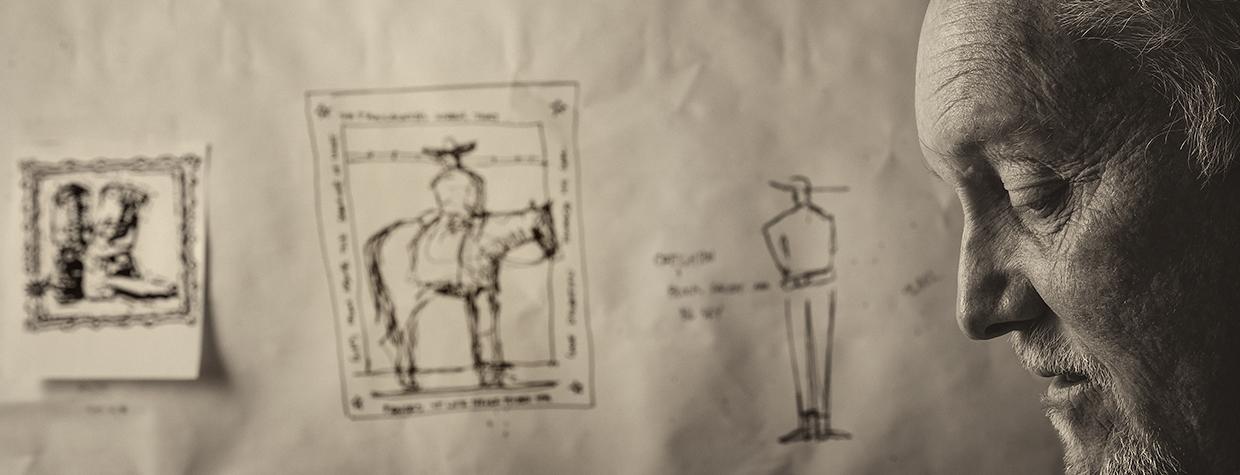JK: As a portrait photographer, you frame your subjects in creative ways. This one feels different. Why?
SB: This is Michael Swearngin, an artist who’s a good friend of mine. We were trying to get some shots of him in his studio, and I kept seeing one whole wall covered with butcher paper, on which Michael had made some sketches. It really spoke to who Michael is and what he does. My plan was to photograph him working on that wall, but sometimes, what you don’t plan works out better than what you do.
JK: Talk about the composition of this photograph.
SB: This was Michael just being Michael and gathering himself a little bit. I didn’t really have the switch turned on for him yet, and sometimes, that’s when you get the best image — before your subject is thinking about being photographed. As for the composition, sometimes I like putting my subject on the edge or in the corner of the frame, simply because when I’m shooting, it feels right. In this moment, Michael was right where I needed him, and it’s hard to replicate those moments. I shot this digitally and converted it to black and white, and
I added a little bit of sepia tone, which I think is a good fit for this image.
JK: What does the background add?
SB: I used a shallow depth of field to slightly blur the background — f/8 would have been too sharp, so this was probably around f/4. If the butcher paper had been perfectly smooth, the photo wouldn’t have worked as well, and the crumples and rips create a soft texture that really adds to it. As for the sketches, I love that from left to right, the boot, the horse and the hat brim lead the viewer through the image and into the payoff, which is Michael’s face.
JK: What’s the key to your success?
SB: In scenic photography, you can go out and photograph a scene, then come back months or years later because you know what the light and weather are going to be like. With portraits, you have to be more reactive and not be tied to doing things a certain way — you just have to go with what feels right. I’ve been able to do that, and I also think I’ve been able to develop my own style. The best compliments I get are when people say they didn’t need to be told who’d made a photo — they already knew it was mine.
To see more of Scott Baxter’s portraits, check out The Gather: A Portrait of the American West, his exhibit at Western Spirit: Scottsdale’s Museum of the West. The exhibit runs through July 30. For more information, visit scottbaxterphotographer.com.
Do you have a question about photography? Email it to [email protected], and our photo editor, Jeff Kida, will try to answer it in a future issue.

